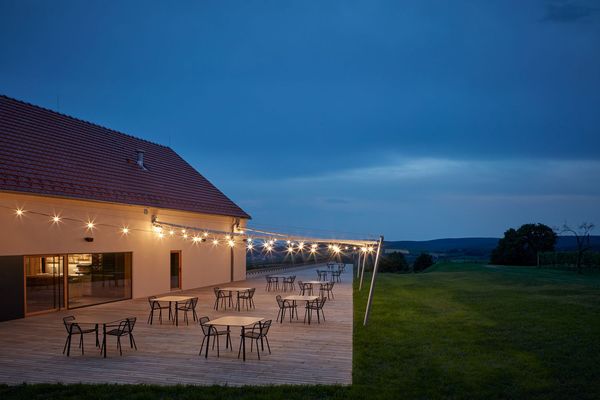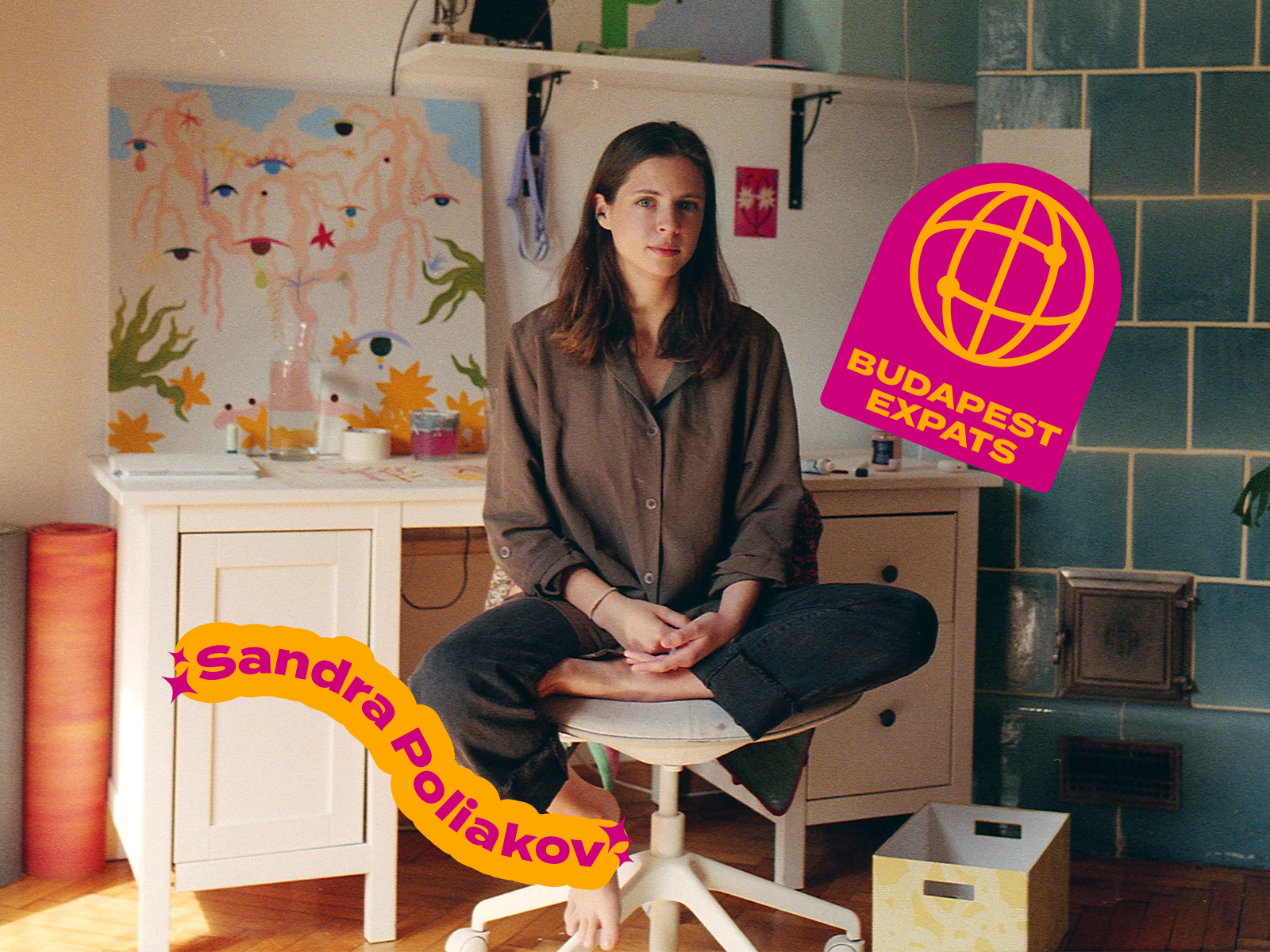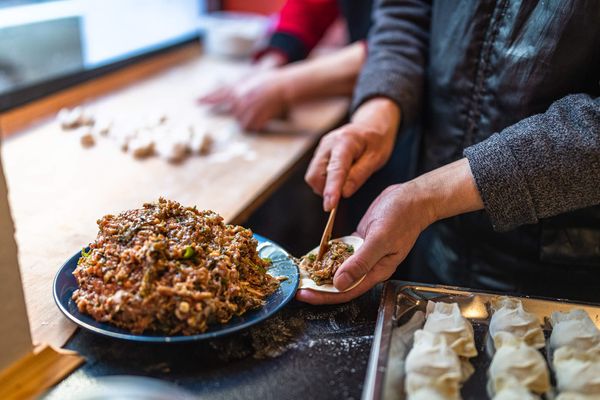I believe that expats living in Budapest have a distinct vision of the city. After all, we are not talking about foreign visitors or tourists, but about people who live and work here, who know our country, and who have placed their trust in it for the long term. They look at our city from a fresh perspective, blending their own culture and past experiences into an exciting mix. Our latest article series, Budapest through the eyes of creative expats, explores foreign artists, designers, and creative professionals who have set up their base in our capital.
Written by Lilla Gollob
In the first part of the series, we visited the Israeli-Bulgarian-Russian freelance illustrator Sandra Poliakov in the bright and spacious downtown apartment where she lives with her partner and their young daughter. They both work in the creative field, mainly from home, so they share parenting duties harmoniously to make time for both of them to create. We arrived in the morning and Sandra’s partner took their little girl to the park so we could get to work. After the photoshoot and interview, Sandra took us on her favorite walk around the area, and we finished with a well-deserved breakfast.

Sandra is a true cosmopolitan: born in Israel, raised in Moscow, studied at a university in Barcelona, and moved to Budapest six years ago. Her illustrations radiate a deep sense of happiness that transcends cultures and borders. Sandra’s artistic credo is to show people how to enjoy the small pleasures of life and to see the beauty in everyday life. She usually visualizes moods and emotions; her compositions are like calm, carefree Sundays. That’s exactly how the flat, Sandra and the morning we spent together felt.
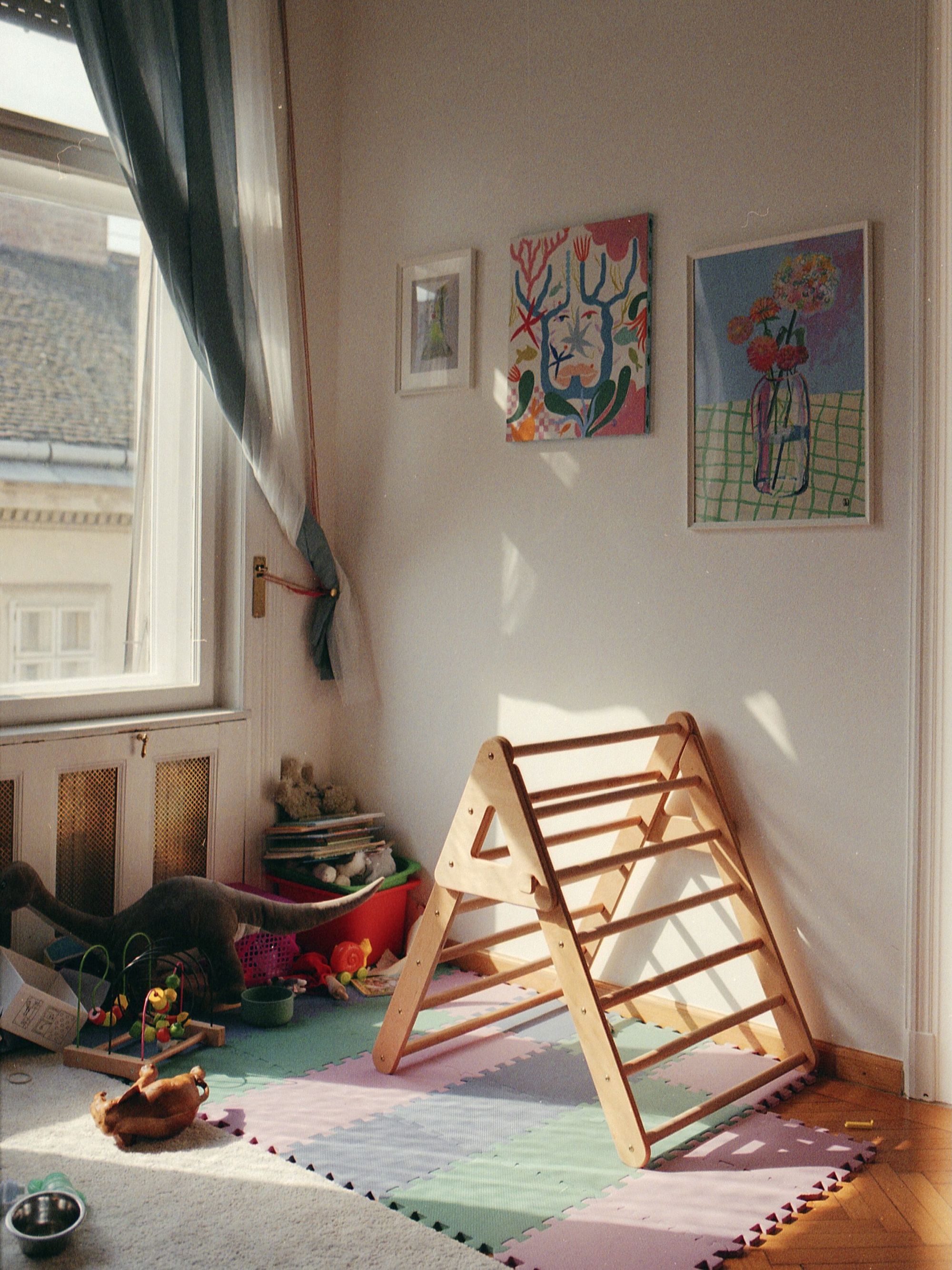
Do you remember your first impression of the city? What caught your eyes?
It was love at first sight. I remember crossing Liberty Bridge for the first time 8 years ago (when I still had no plans of moving here) and thinking how beautiful it would be to live here. In about a year, I moved to Budapest.
What’s the background story of your relocation to Budapest?
My boyfriend is from Budapest. Before I moved here, I studied architecture in Barcelona. My partner’s dad and my dad both have Bulgarian origins, they are long-time friends. We met two times when we were little, but we didn’t really care about each other back then. When he came to Barcelona for Erasmus, we met again and fell in love right away. The story is simple from there on, he had a job opportunity in Budapest and I had no plans, so I came with him. It was quite spontaneous. We lived in a very quiet neighborhood at Rózsadomb: it was a new and calming experience for me. And that was part of the reason why I decided to give up my plans of being an architect and pursue an artistic career instead.
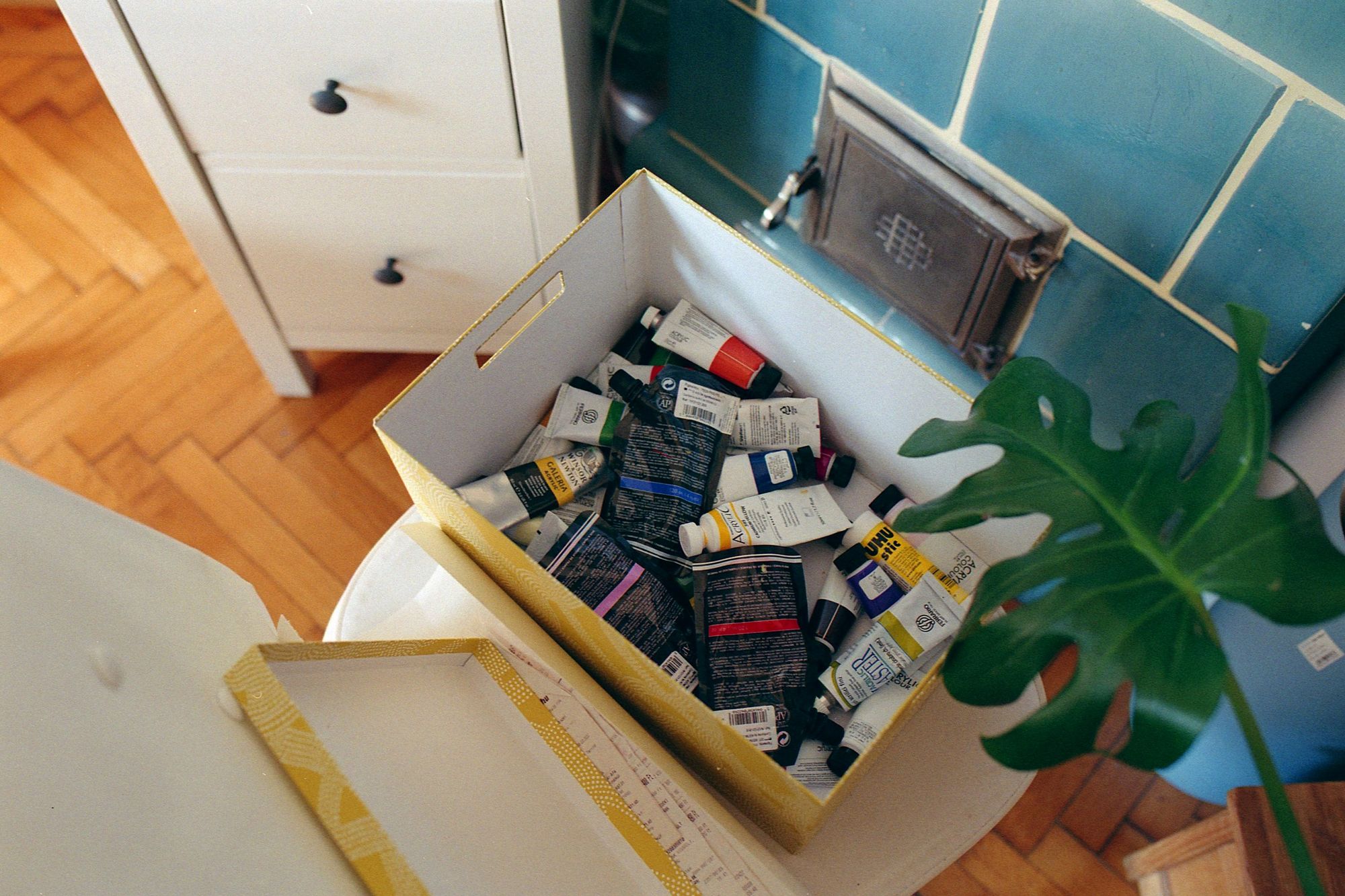
How’s life treating you here since then? What difficulties and successes have you had?
Moving here was probably the most challenging time in Budapest: I studied architecture, but I decided I didn’t want to do it anymore. I started to share my drawings online while working for clients to have a stable income. Then, when I was in my last trimester with my daughter, Noa, I decided to stop taking clients. I wanted to concentrate on myself, and take time to rest and meditate, so it was the best decision to let go of all the pressure. Afterward, I realized that more ideas come when I have more time to create and reflect. That’s when my sales really started to increase, and in a few months, I earned much more money than I would with clients. I started to believe that it could work out well if I just did what I really believed in.
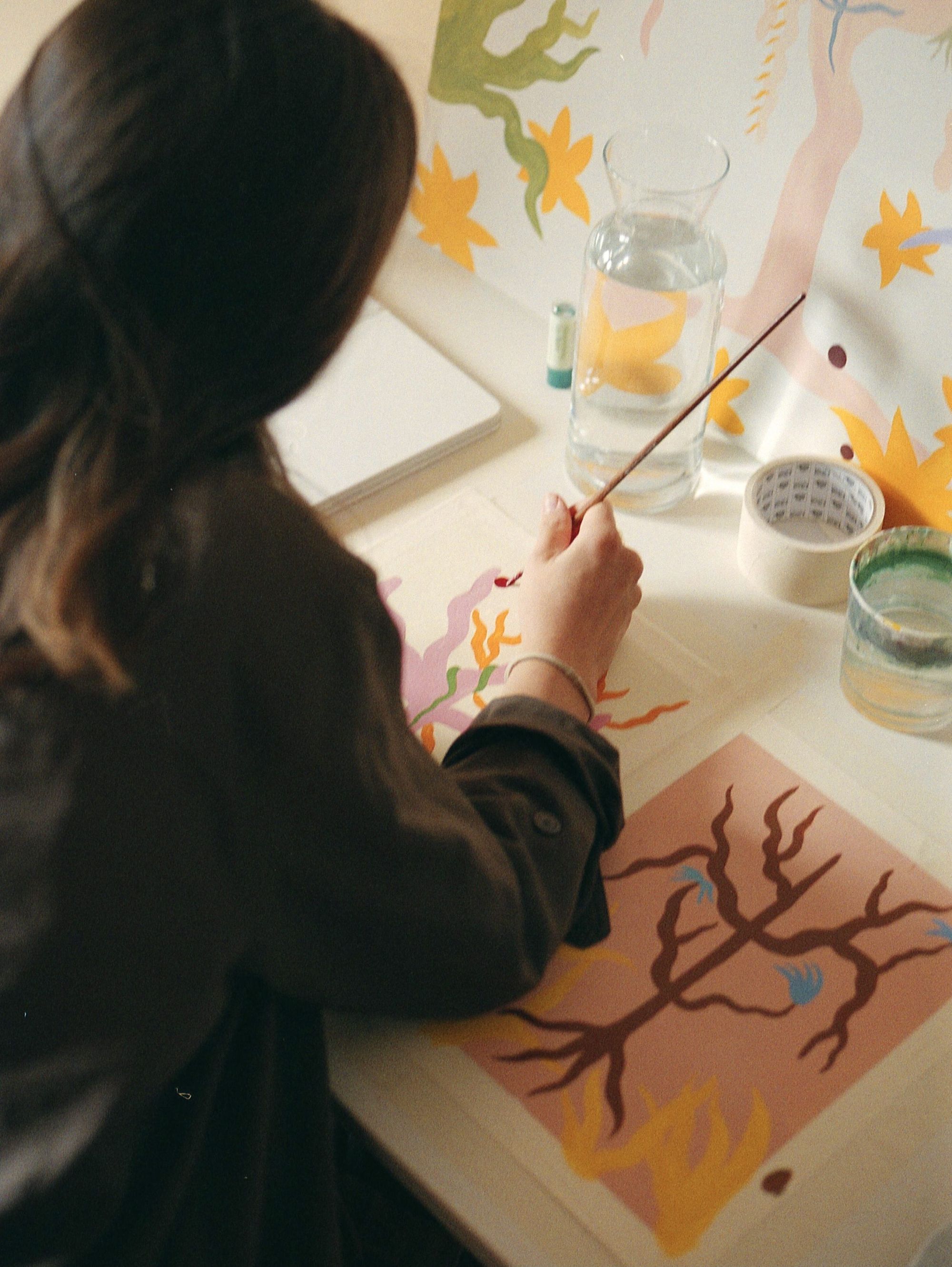
What’s your favorite place in Budapest?
I love the whole city in general. I like that it’s very different from what I experienced before. I don’t think I have a specific favorite spot, more like routes from A to B. I have two favorite walks: a longer one from the top of Rózsadomb down to the center. And another one that we do almost every day: I take my daughter to the Danube. The best part is when we stop at Norma coffee and I share a croissant with Noa. Then we go to the playground in the Károlyi Garden, which is just around the corner. This route will change soon because we’re moving to the 12th district, where I will finally have my own studio room.
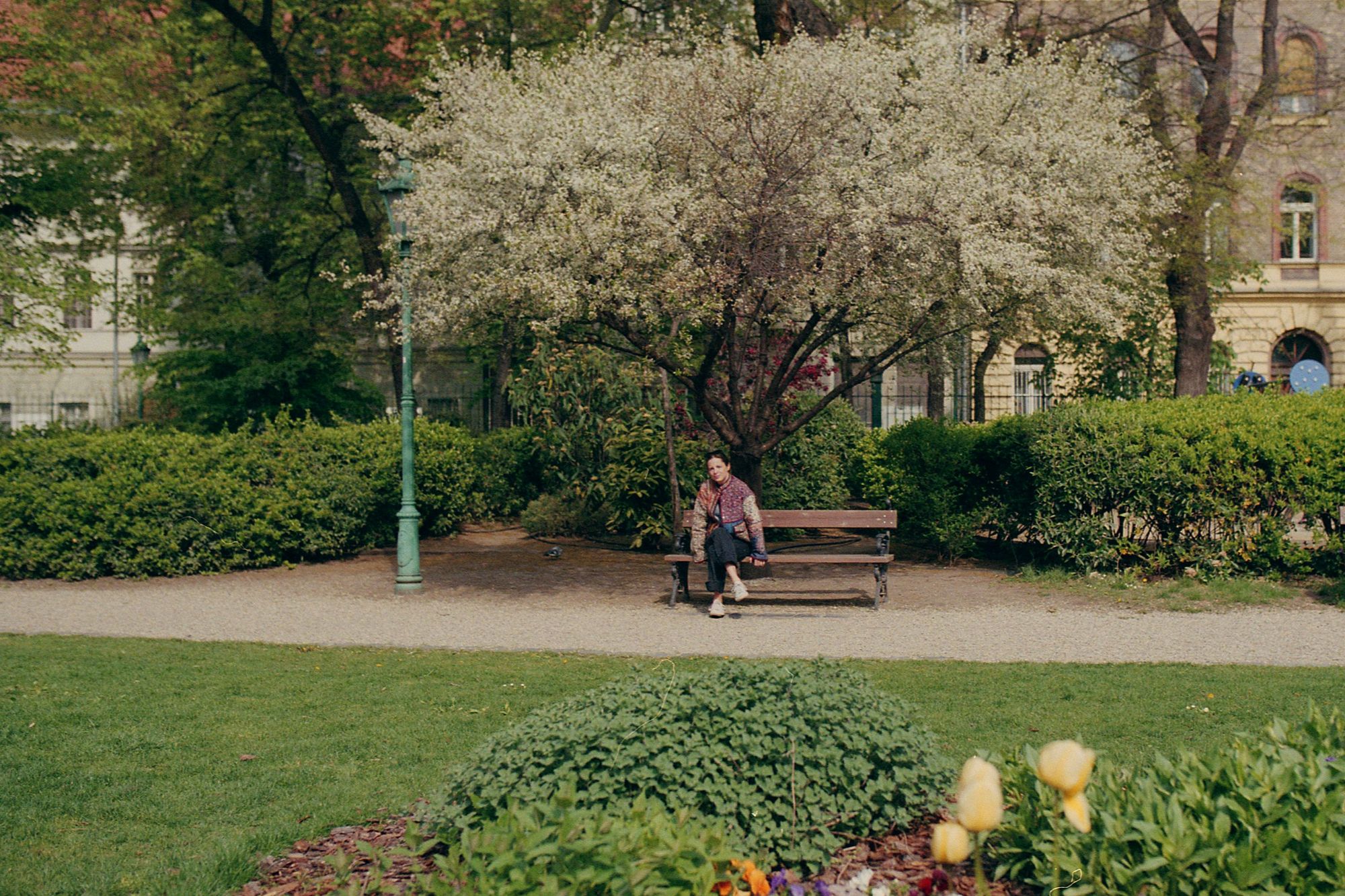

You had a special collaboration recently with a Hungarian knit-wear brand, Oatava. What was it like working with the girls?
It was a long design process because they are both mothers too. They made the process incredibly easy for me. It wasn’t like working with a client at all; no one was pushing me with deadlines. In fact, we were supposed to do only one item at first, but they liked it so much that we decided to go for a whole mini collection. They designed the shapes and I designed the color combinations and compositions. It was an awesome experience and I would love to work with them again.

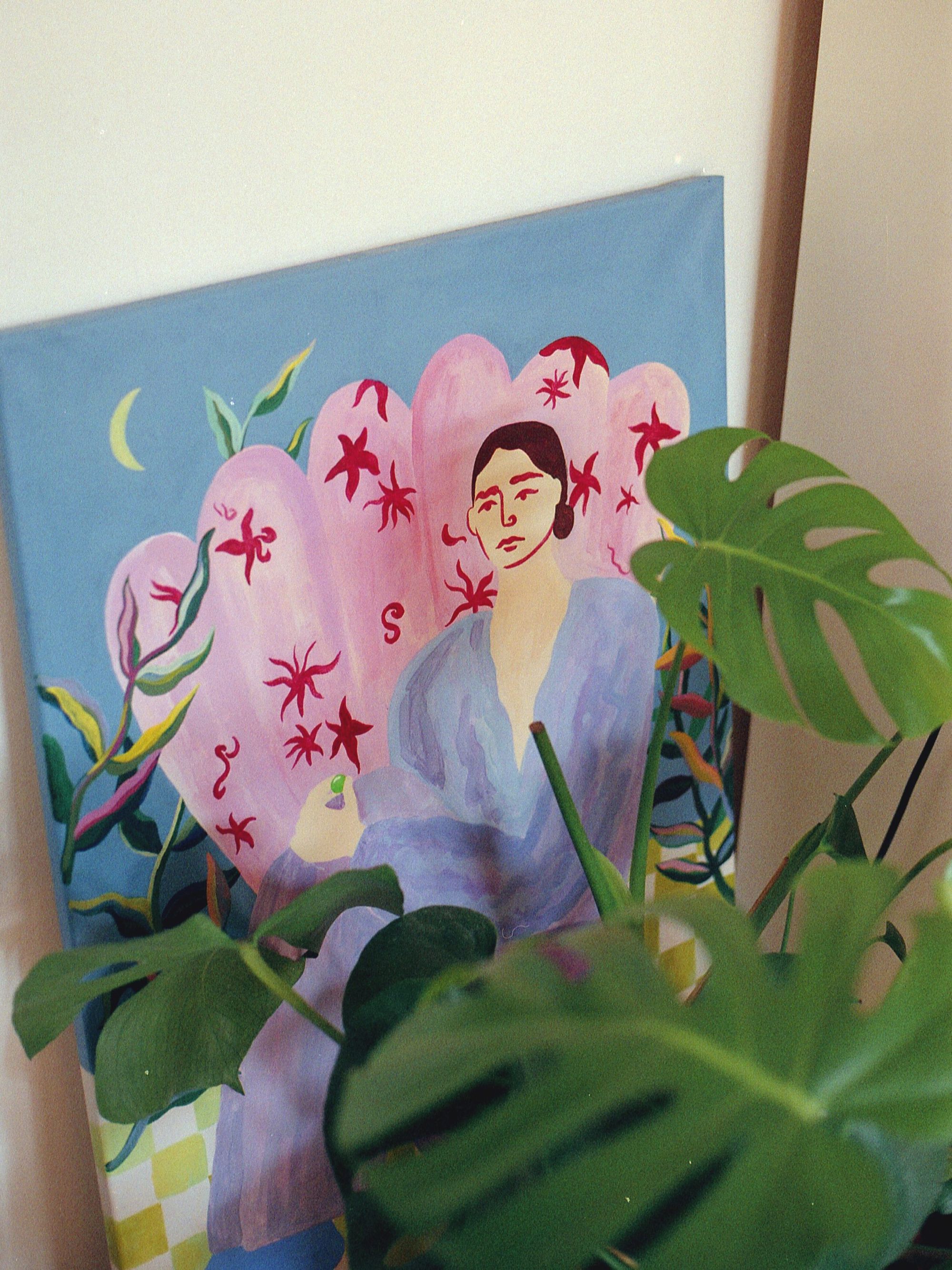
You gave all the pieces exotic-sounding names. Can you share to stories behind them?
For the LISIKA jumper, I just mixed up the names of both my grandmas, which are Kalinka and Vasilka. The pink one is called DESI, which is the short name of my mom. She loves this kind of bright reddish-pink color, so I dedicated this piece to her. The BUBA coat, in Hebrew, means doll, the PRI blanket means fruit, and the pink scarf is called POMA, for apple. The whole collection is about spring, blooming, and the beginning of a new life.
I see that female figures in the family are important to you. What do you bring with you from them?
When I was very little, I lived with my grandmas, who influenced me greatly. My Baba Kalinka (my mom’s mom) taught me many principles that I still follow today. She is a fantastic woman; I could do a whole interview about her. She used to be a director of an orphanage, now she is 85 years old and has a huge wardrobe. She buys these clothes second-hand or gets them from people and then, in many cases, donates them further. It’s her hobby; I have a lot of clothes from that wardrobe. She’s also religious but in a very chill way. One thing that I learned from her is that everything is happening for a reason. I’m not religious, so I explain it to myself a bit differently, more like that everything is connected and our whole world is an organism. I really love that I got this belief from her. She also taught me that there are no better or worse people. Everyone is born good; it’s just that something happens to some people that makes them unable to continue being nice. Yet everybody deserves kindness.
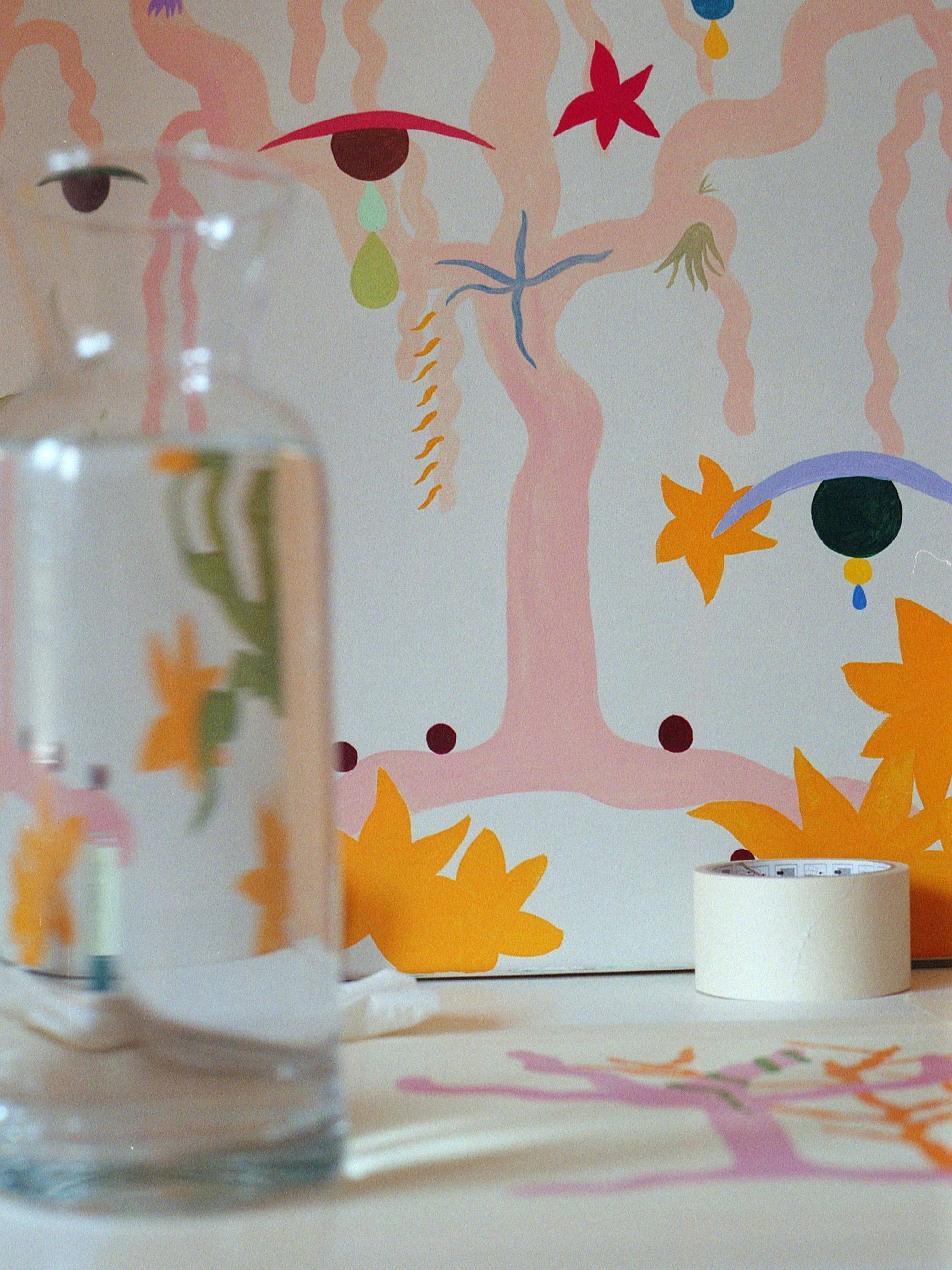
Can you share what you’re working on lately and where do you get your inspiration?
For these past few months, my inspiration has come from within. Before that, I used to walk around the city looking for interesting details and color composition, but now I am more into internal experimentation. When the war started, I couldn’t work for days. It’s been really hard on me mentally. I know I live in a bubble, but I don’t know any Russian friend or family member who would support what is happening right now. This painting that you can see here is the only one I could create. It helped me a lot by releasing my thoughts into it. I don’t know if it is as evident as it is to me: all the eyes are crying, the green is the war creeping in from the side and the yellows are sunflowers, the symbol of Ukraine. The green painting next to it with the tree is the one I painted right after. I wanted to do something huge and meditative. Trees to me are a symbol of what I told you earlier about my grandmother’s teaching, that everything is interconnected. This painting is a whole other world with creatures who interact with each other. There are no emotions in it, I’m more of an outside observer. Right now, I am working on two small paintings simultaneously, so I can release more ideas while my daughter sleeps. It is funny to paint two things at the same time. I like having an outcome fast. Not because of the result, but because I have a lot of energy to let out and if one painting is finished quickly, I can start another.
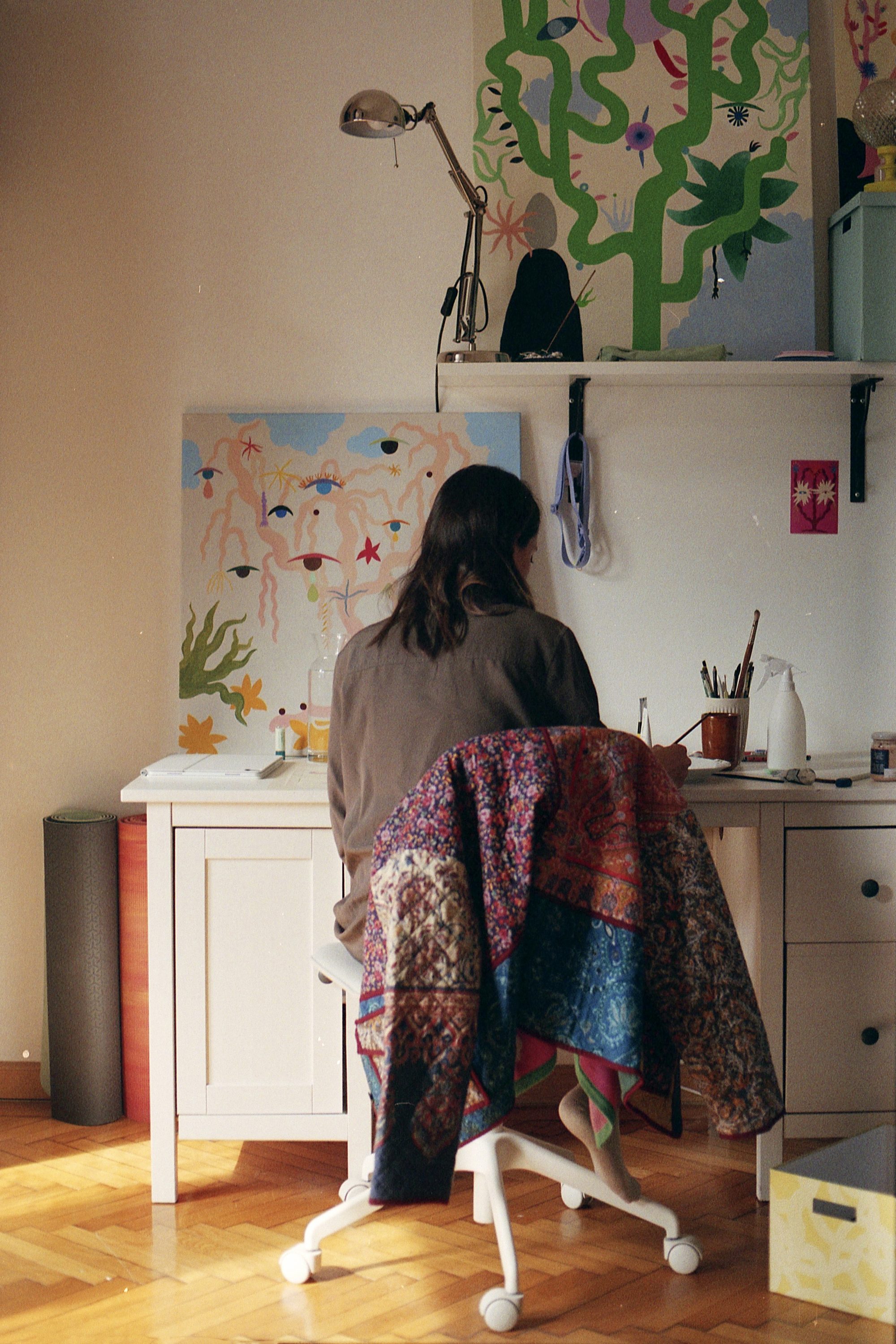
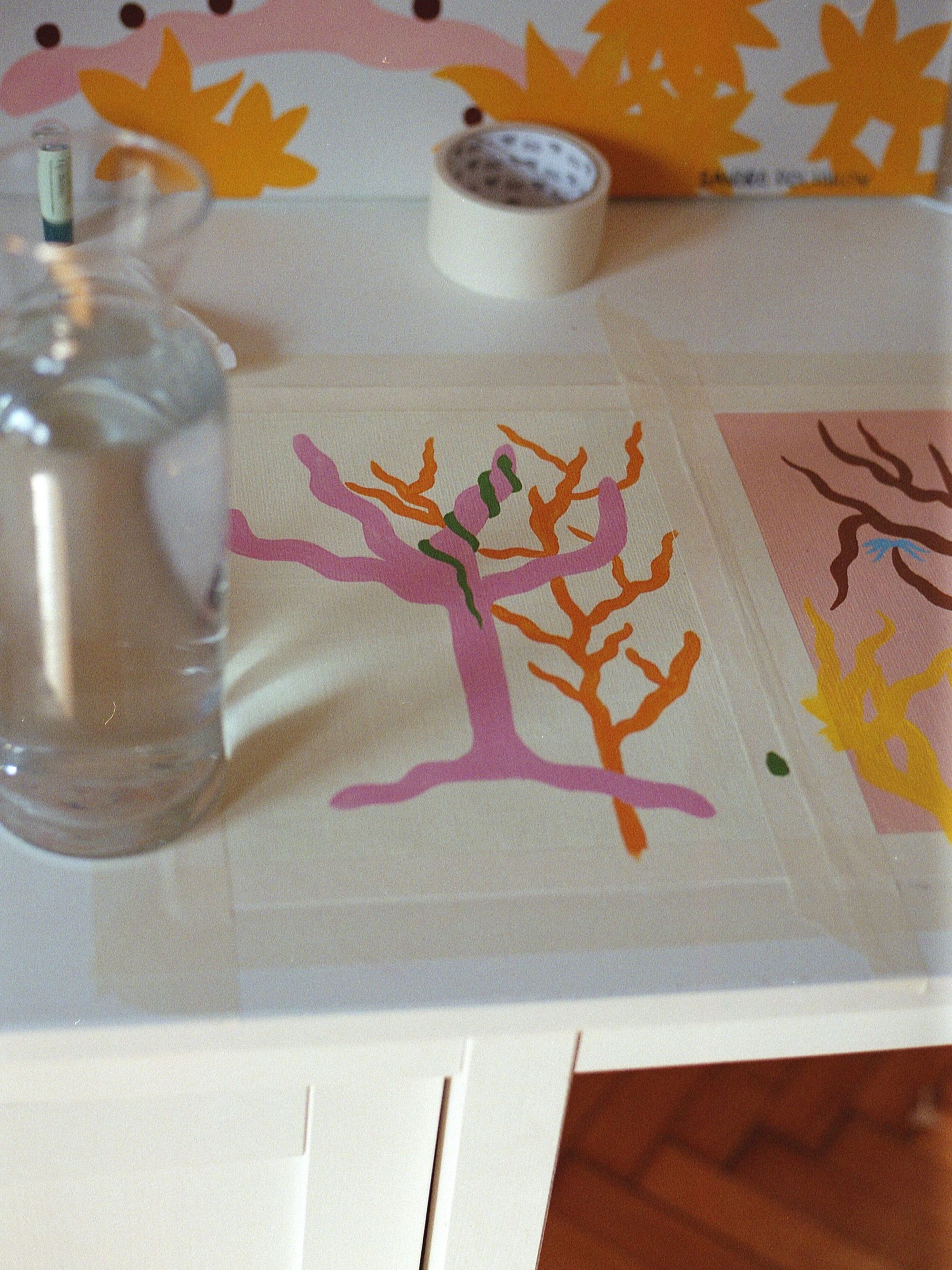
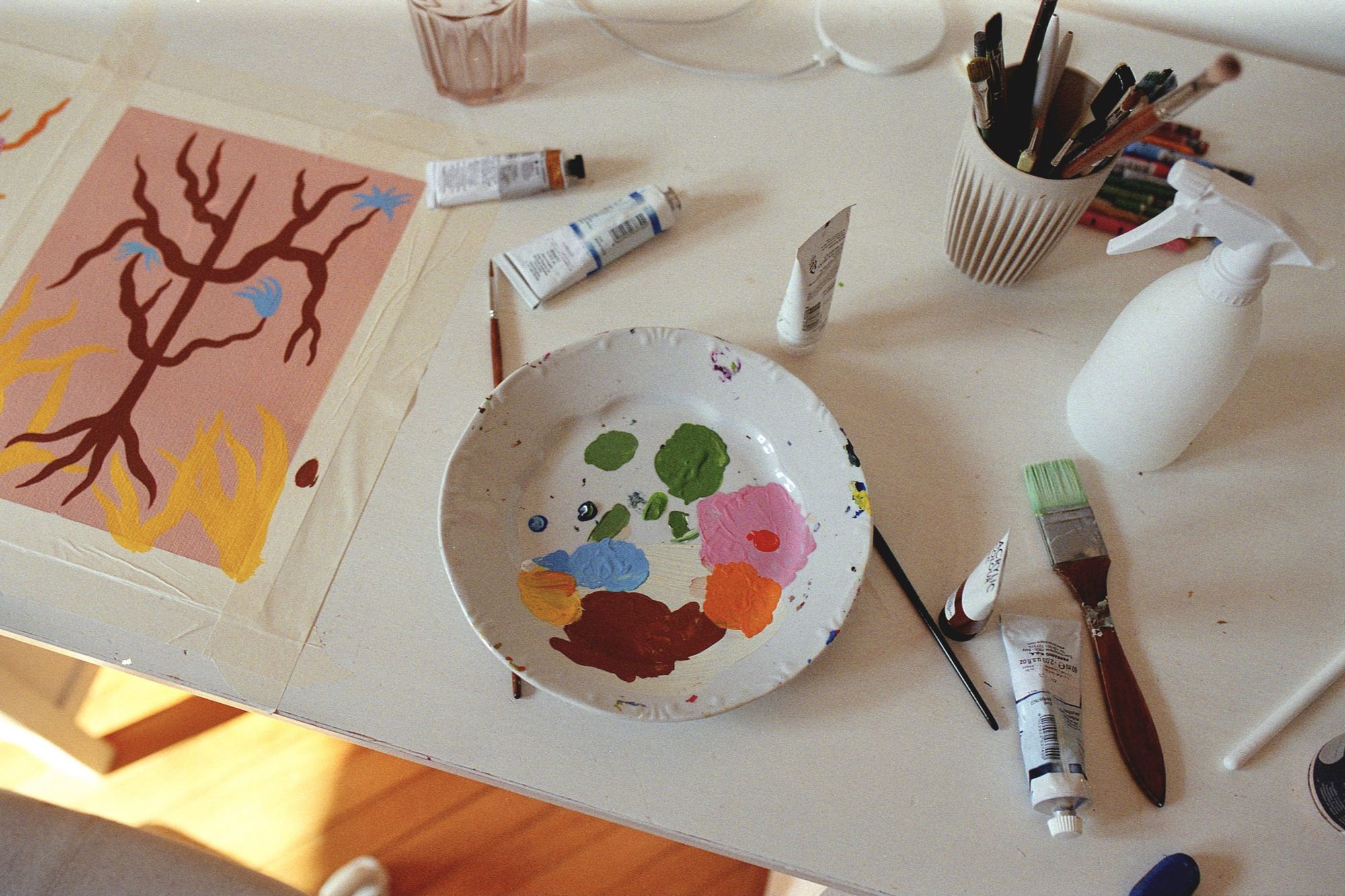
Favorite Hungarian dish: Nagyi’s (my boyfriend’s grandma’s) Gulyás soup.
A Hungarian word that you know and like: Madár. It sounds nice.
Best season in Budapest: Spring!
A song that describes your mood lately: I prefer silence.
A color that you enjoy these days: All of them, but recently I think a lot about red.
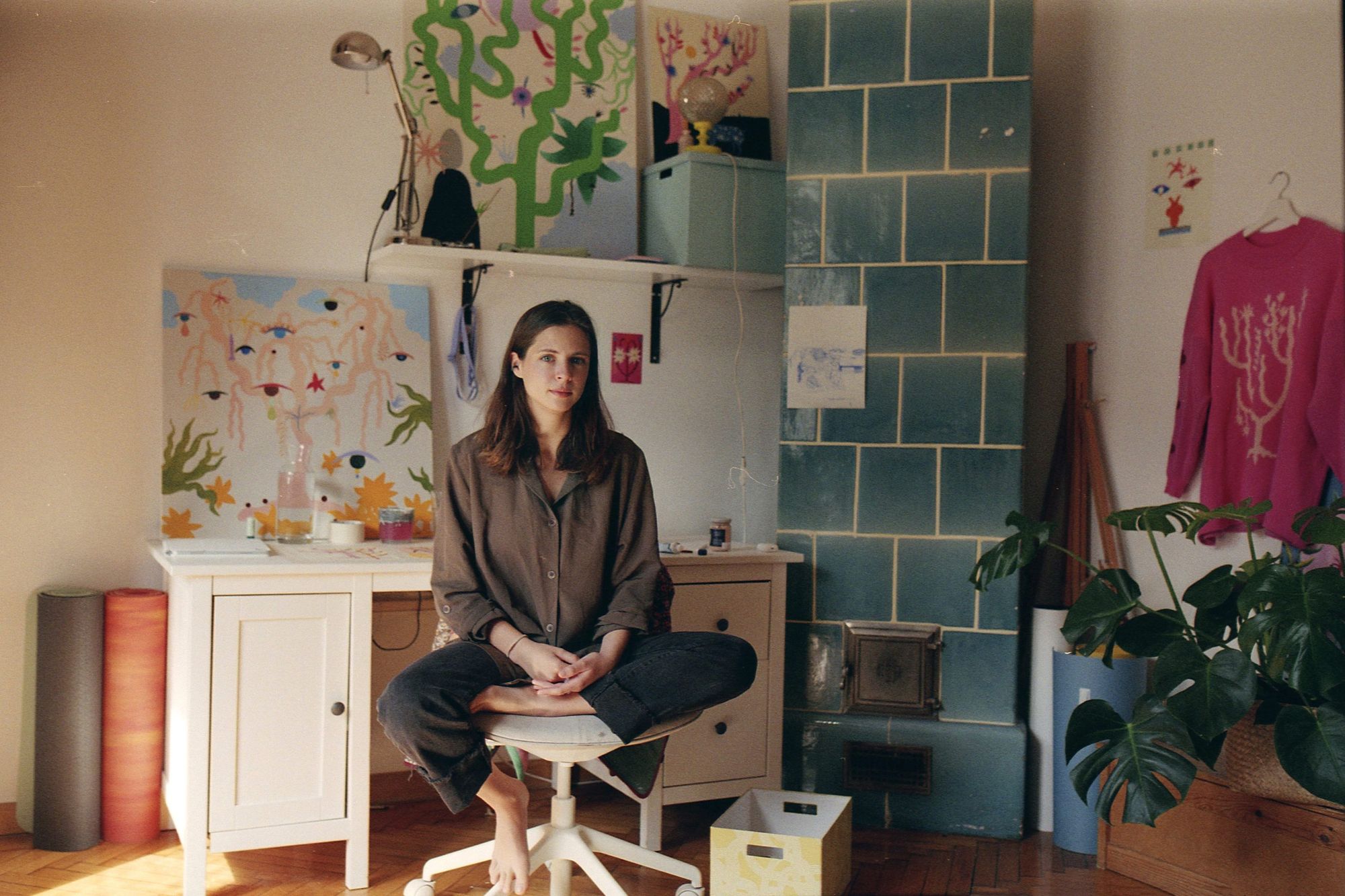
Sandra Poliakov | Shop | Instagram
Fotók: Gaál Dani
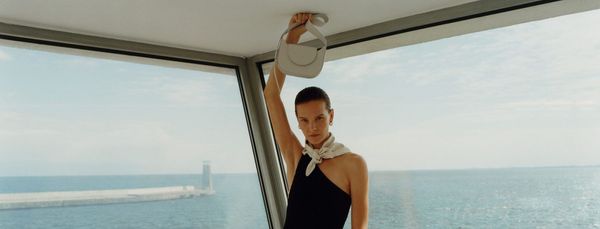
Atomy Studios educates with unique shapes and use of fabric
